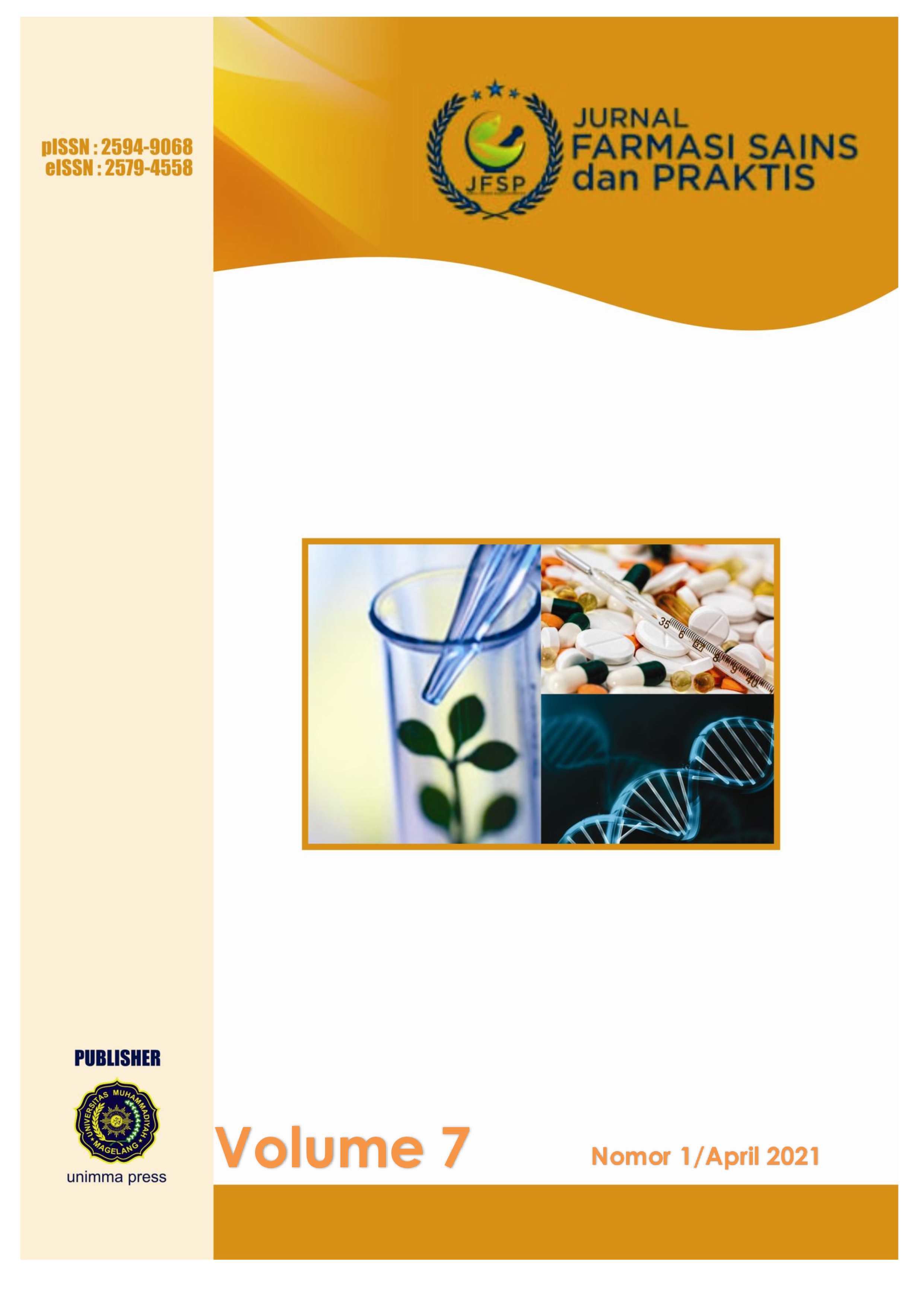Main Article Content
Abstract
Rational Drug Use has several indicators, one of which is service indicators, where service indicators will play a role in increasing rational drug use so that it can support the success of treatment to achieve a better quality of life and patient welfare. The purpose of this study was to determine rational drug use in the city of Semarang based on service indicator parameters. This research is a descriptive-analytic with a cross-sectional design, data collection is done prospectively with a direct observation approach and direct interviews with respondents. The number of respondents was 744 patients (372 at Puskesmas N and 372 at Puskesmas TK who were taken by consecutive sampling. The data were processed using the Mann-Whitney statistical test with a p-value <0.05. The results of this study indicate that the use of drugs in Puskesmas N and Puskesmas TK There is a significant difference with a p-value <0.05. In the meantime of medical consultation 5-11 minutes; the average time for drug preparation 10-16 minutes; the percentage of drug delivery suitability is 100%; the percentage of adequate labeling is 100% and the percentage of knowledge Patients at the puskesmas approach rationality and there are differences in services between the two Puskesmas. The government needs to increase the number of pharmacists and improve infrastructure, especially in terms of drug counseling at each puskesmas so that it is hoped that patient knowledge of the drug regimen to be consumed will increase.
Keywords
Article Details

This work is licensed under a Creative Commons Attribution-NonCommercial 4.0 International License.
References
- Anonim. (2018). Profil Kesehatan Kota Semarang Tahun 2018. Profil Kesehatan Kota Semarang Tahun 2018, (Profil Kesehat. Kota Semarang Tahun 2018).
- Dinas kesehatan. (2018). Profil Kesehatan Kota Semarang Tahun 2018. Profil Kesehatan Kota Semarang Tahun 2018, Profil Kesehatan Kota Semarang Tahun 2018.
- El Mahalli A.A., O.A.M. Akl., S.F. Al-Dawood., A. A. A.-N. (2012). WHO/INRUD Patient Care and Facility-Specific Drug use Indicators at Primary Health Care Centres in Eastern Province, Saudi Arabia. Eastern Mediterranean Health Journal, Volume 18.
- Kardela, W., Retnosari, A., Supardi, S. (2014). Perbandingan Penggunaan Obat Rasional Berdasarkan Indikator WHO di Puskesmas Kecamatan antara Kota Depok dan Jakarta Selatan. Jurnal Kefarmasian Indonesia, Vol 4 Nomor 4.
- Kemenkes RI. (2006). Kebijakan Obat Nasional. Keputusan Menteri Kesehatan RI Nomor 189/MENKES/SK/III/2006.
- Kemenkes RI. (2019). Laporan Kinerja 2018 Direktorat Pelayanan Kefarmasian (Farmalkes). (Direktorat Pelayanan Kefarmasian).
- Makhdalena, Mahdi Jufri, R. A. (2018). Analisis Pelayanan Kefarmasian Berdasarkan Indikator Pelayanan Pasien WHO Pada Puskesmas Kecamatan Yang Belum dan Sudah Terakreditasi di Kota Depok. Jurnal Kefarmasian Indonesia, 8 Nomor 2, 137–143.
- Mariam A.H., Yariagadda R., Eshetu M.B., Evaluating Rational Drug Use with the Help of World Health Organization’s Core Indicators in Bule Hora Hospital, Southern Ethiopia. Gaziantep Medical Journal 21(2) : 108-113.
- Ntirenganya R.P., Laetitia N., Joseph N., 2018. Assessment of Patient Care Indicators in Three District Hospitals in Rural Rwanda : A Cross-Sectional Study. IOSR Journal Of Pharmacy Volume 8, Issue 7 : 36-39.
- Permenkes RI. (2016). Peraturan Menteri Kesehatan Nomor 74 Tahun 2016 tentang Standar Pelayanan Kefarmasian di Puskesmas. Peraturan Menteri Kesehatan RI.
- RI, K. (2017). Laporan Kinerja Kementerian Kesehatan Tahun 2017. (Menteri Kesehatan RI).
- Sisay M., Getnet M., Bereket M., Firehiwot A., Tesfaye G., 2017. Evaluation of Rational Drug use Based on World Health Organization Core Drug use Indicators in Selected Public Hospitals of Eastern Ethopia : a Cross Sectional Study. BMC Health Services Research 17:161.
- Veronika, M., (2011). Analisis Pelayanan Pasien sebagai Salah Satu Indikator Penggunaan Obat Rasional di Seluruh Puskesmas Kecamatan Kota Depok. Jakarta : Universitas Indonesia.
- Wahyudi, Setyo Tri, (2017). Statistika Ekonomi : Konsep, Teori, dan Penerapan. Malang : Tim UB Press.
- WHO, (1993). How to Investigate Drug Use in Health Facilities : Selected Drug Use Indicators. World Health Organization Publication.
